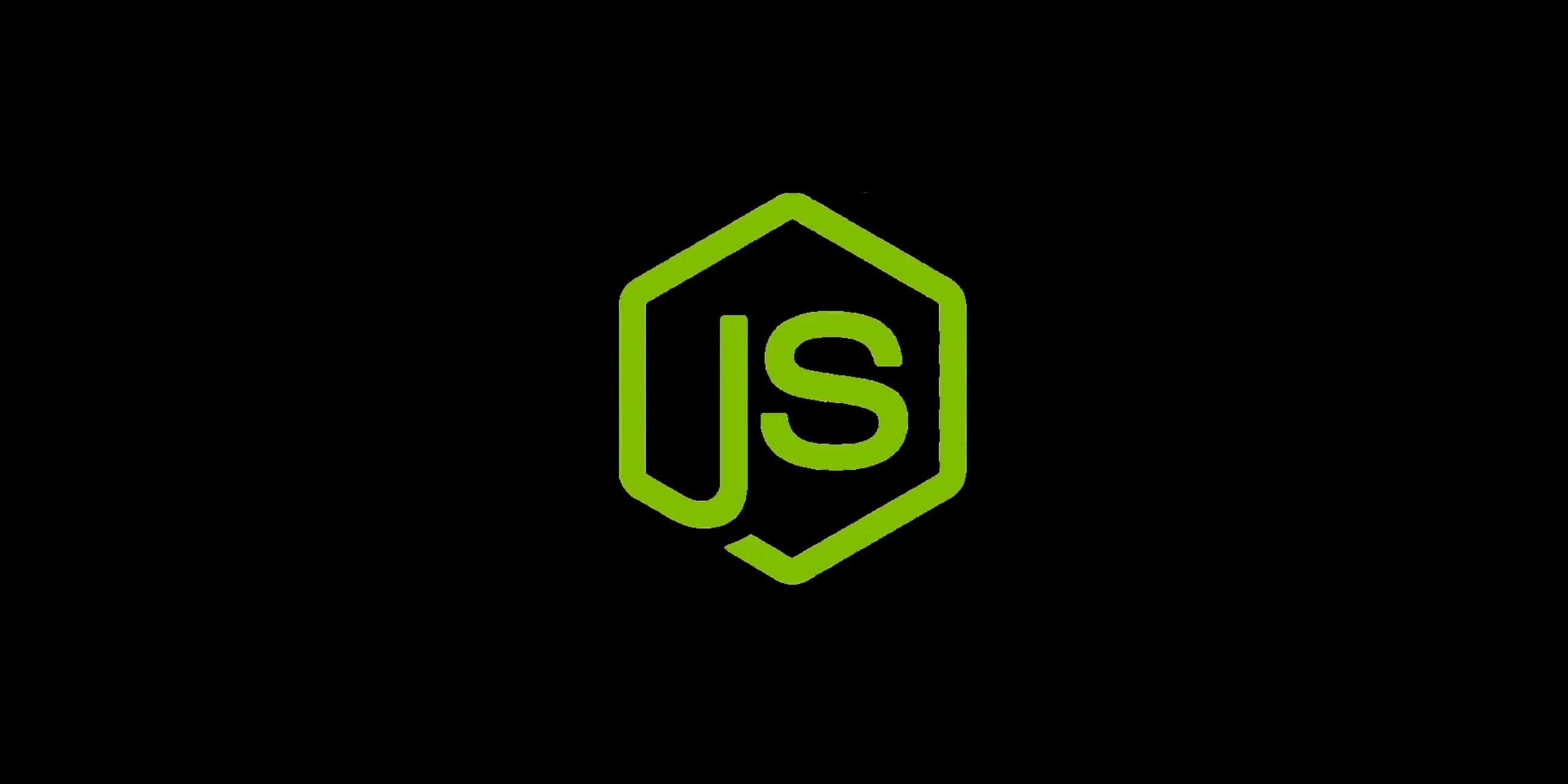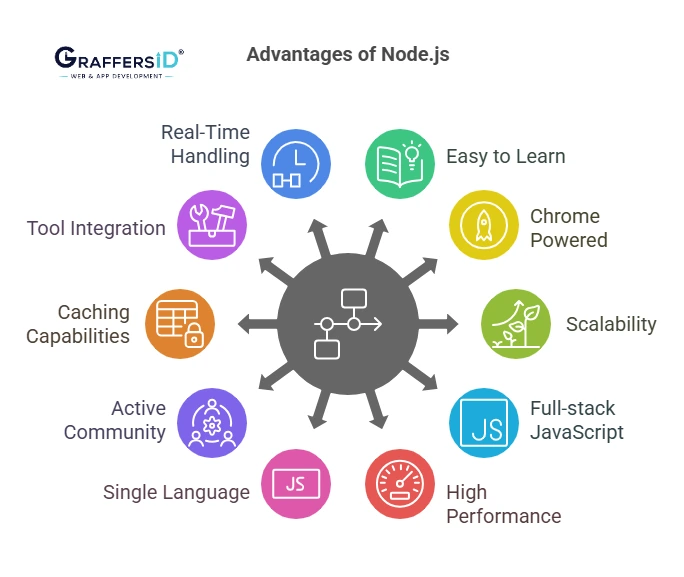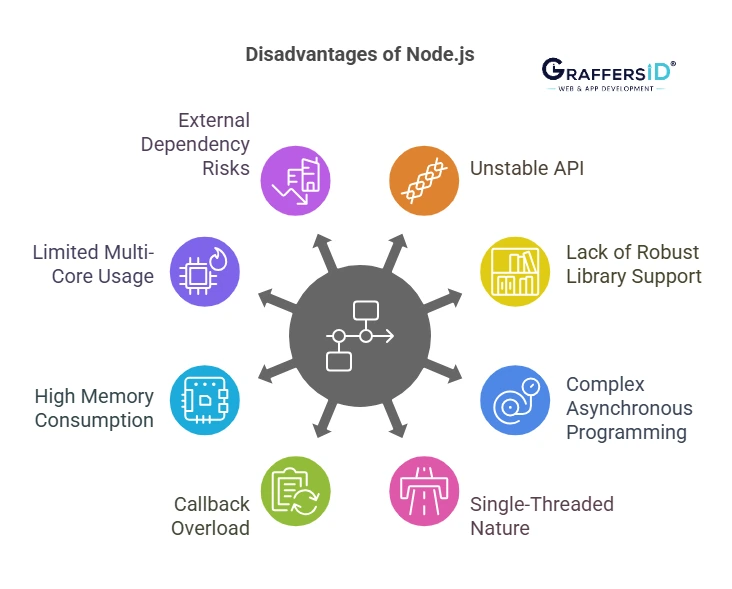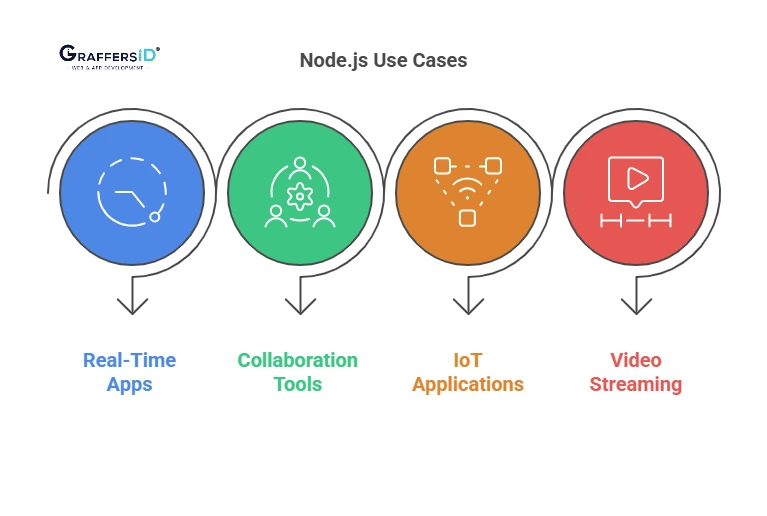There is no doubt that JavaScript, specifically Node.js, is one of the widely used client-side programming languages by developers. JavaScript is employed for front-end development and proves to be quite handy for building cross-platform applications. JavaScript also has a great reputation due to its usage in other popular platforms such as PhoneGap, Apache, NativeScript, Accelerator, Titanium, and more.
In the current area, the area of application of JavaScript has widened, and now it is also being utilized as server-side programming. Node.js has played a crucial role in this major shift in web development. It is found in almost every application that we use in our day-to-day lives. The applications like Netflix, Uber, Ola, Book My Show, and more, which receive a lot of traffic every day from various geographic locations, are built using NodeJS. It aids in the smooth and flawless operation of these applications.
Here is a detailed explanation of what Node.js is all about, why you should choose it for web development projects, and what are its pros and cons.
What is Node.js?

Node.js is an open-source, JavaScript-based runtime environment based on Google Chrome’s V8 engine. It enables developers to write server-side code in JavaScript, broadening its application beyond the browser.
Content creation for the web page is done on the server end using server-side programming. NodeJS plays an important role in server-side programming and is an open-source JavaScript framework that also aids in the development of network and web applications.
Node.js manages browser requests and offers asynchronous, event-driven I/O APIs to fetch the results not only speedily and accurately. It runs a single-threaded event-based loop, hence all the executions become non-blocking.
Here, it is important to note that:
- Node is a server and not a framework.
- Node wrappers over JavaScript V8 Runtime are made in C and not in JavaScript
- It runs in a single thread with a callback concept.
Read More: NodeJS Security Best Practices to Follow
Advantages of Node.js

Here are the advantages of using NodeJS for server-side programming:
1. Easy to Learn and Use
Most developers have a good grasp of JavaScript as it is one of the most popular programming languages.
Developers who are already good at JavaScript find it easy to use Node.js at the backend. It is quite easy to learn, and it also consumes less time.
2. Powered by Google Chrome
The search engine is empowered by Node.js, and it not only aids in the front-end development but also has a great impact on the backend. Node.js is supported by the Google V8 engine, which has the power to execute at the same time on the front end using JavaScript.
Google lists Node.js as one of the fastest runtime systems engines so that’s amazing. Also, it is easy to find mistakes in the front end as well as the back end with it.
3. Scalability
One of the key benefits offered by Node.js is that it makes it easy for developers to scale the application in horizontal as well as vertical directions. The application can be scaled in a horizontal dimension by adding extra nodes to the current system.
Furthermore, NodeJS also allows adding extra resources to a single node during the vertical scaling of the application. Hence, NodeJS is highly scalable and offers greater options than other JavaScript servers.
4. Full-stack JavaScript
Node.js is regarded as a full-stack JavaScript for serving server-side applications as well as the client.
With NodeJS, you don’t need separate developers for frontend and backend—JavaScript handles both ends.
5. High Performance
As mentioned earlier, Node.js interprets the JavaScript code through Google’s V8 JavaScript engine. JavaScript code is directly compiled into machine code by the engine. Hence, it becomes easy to implement the code. Moreover, it can be done quickly and in an effective manner.
6. Single Programming Language
Node.js framework enables developers to create server-side applications in JavaScript. This means that developers can write both front-end and back-end applications in JavaScript using a runtime environment.
7. Large and Active Community
Node.js has a large and active community of developers who keep on contributing to the further improvement and development of this server-side JavaScript.
Developers working on Node.js have been supported well by JavaScript programmers who provide them with easy and ready-made solutions and code on GitHub.
8. Caching Capabilities
The open-source runtime environment of NodeJS provides the ability to cache a single module. The entire request for the first module gets cached in the application memory.
9. Tool Integration
With Node.js, developers receive extended support for various commonly used tools. If you want to test the source code of the Node.js application, you can do it by using Jasmine and other such testing tools.
Similarly, if you want to install or identify the project dependencies, you can make use of npm, which is a powerful package manager.
10. Real-Time Request Handling
Node.js provides the option of non-blocking I/O systems. It helps you to process several server requests simultaneously.
Node.js system can handle concurrent requests better than Ruby or Python. The incoming requests get lined up and are addressed quickly and systematically.
Disadvantages of Node.js

1. Unstable API
One of the key problems that developers encounter while working on Node.js is that the Application Programming Interface keeps changing at frequent intervals and does not remain stable.
At times, you will see a new API with multiple backward-incompatible changes. As a result, developers are obliged to make changes in the accessible code bases to remain in tune with the latest version of the NodeJS API.
2. Lack of Robust Library Support
Compared to some other programming languages, Node.js has a relatively limited standard library. While it provides essential functionalities for building web servers, networking, and file system operations, many other common functionalities require external libraries. Although the Node Package Manager (NPM) ecosystem is vast and offers numerous third-party packages, relying on external dependencies may introduce security risks, compatibility issues, and maintenance challenges.
3. Complex Asynchronous Programming
If you want to boost the scalability of the application, the requirement is that the application should adopt an asynchronous programming model.
However, developers find this model to be more difficult as compared to linear blocking I/O programming.
Another disadvantage of the asynchronous programming model is that the code becomes clumsy, and programmers need to depend on nested calls.
4. Single-Threaded Nature
Node.js is single-threaded, meaning it runs on a single thread and can only utilize a single CPU core at a time. This design choice can limit its performance in certain scenarios, especially when dealing with CPU-intensive tasks. Although Node.js uses an event-driven, non-blocking I/O model to handle concurrent requests efficiently, it is not well-suited for CPU-bound operations.
5. Callback Overload
Node.js depends heavily on callback functions to handle asynchronous operations. While callbacks provide a way to manage asynchronous code execution, they can lead to complex and nested code structures, often referred to as “callback hell.” This can make code harder to read, understand, and maintain. Although newer asynchronous patterns like Promises and async/await have been introduced to mitigate this issue, legacy codebases may still heavily rely on callbacks.
6. High Memory Consumption
Node.js can consume more memory compared to some other server-side technologies. This is partly due to the need for duplicate instances of shared resources for concurrent requests. While memory consumption can be optimized by careful coding and monitoring, it is an important consideration, especially when deploying applications on resource-constrained environments.
7. Limited Support for Multi-Core Scaling
While NodeJS is efficient in handling concurrent I/O-bound operations, it lacks built-in support for scaling across multiple CPU cores. This can be a limitation when developing applications that require high CPU utilization or parallel processing. Although there are workarounds like using the “cluster” module or external tools, managing multi-core scaling can be more challenging compared to platforms explicitly designed for multi-threaded execution.
8. External Dependency Risks
Depending on external npm modules can lead to security and maintenance issues.
Read More: What is Node.js used for?
When Should You Use Node.js?

Node.js excels at tasks requiring real-time interactivity, scalability, and performance. Let’s evaluate when to use Node.js and what it’s used for in web development to achieve the best application performance.
1. Real-Time Applications
Node.js is a great choice if your project requires real-time data exchange, such as in live chat, messaging apps, or real-time notifications. With its asynchronous nature and WebSocket capabilities, It can manage thousands of concurrent connections with ease.
2. Collaboration Tools
Node.js provides low latency and consistent data synchronization for apps that allow multiple users to interact and view real-time updates, such as collaborative document editors or project management tools like Trello.
3. IoT-Based Applications
IoT applications require managing high request volumes and instant device connectivity. Node.js is ideally suited for Internet of Things applications due to its support for lightweight protocols and capacity to handle several simultaneous events.
4. Video Streaming Apps
Node.js manages data in pieces rather than loading the complete file at once for apps that stream audio or video content (such as Netflix or Spotify). Thus, building media-rich platforms is made much more efficient by its native stream module.
Conclusion
Even with a few disadvantages, Node.js is still one of the most adaptable and effective backend technologies for modern web applications. It is an excellent option for developing apps in 2025 and beyond due to its full-stack capability, speed, and community support.
If you’re looking to build a real-time chat application, a scalable marketplace, or a complex SaaS product, GraffersID can help you hire top-tier Node.js developers in India.
FAQs
Q1. How Node.js works?
Node.js works on a single-threaded, event-driven architecture. It uses non-blocking I/O operations, meaning it can handle multiple requests at once without waiting for one to complete. The event loop and callback functions allow it to process tasks efficiently, making it ideal for real-time applications.
Q2. Why is Node.js single-threaded?
Node.js is single-threaded to simplify development and avoid complex thread management. Instead of creating new threads for each request, it uses an event loop to handle many connections efficiently in a single thread. This design improves performance for I/O-heavy tasks like API calls and database operations.
Q3. What are Node.js advantages and disadvantages?
Node.js is fast, scalable, and allows JavaScript to be used on both the frontend and backend. It has a huge developer community and supports real-time features. However, it’s not ideal for CPU-heavy tasks and may face callback issues in complex applications. Frequent updates can also lead to compatibility challenges.
Q4. What is Node.js best used for?
Node.js is perfect for building real-time applications like chat apps, live streaming platforms, and collaborative tools. It’s also great for creating REST APIs, microservices, and single-page applications. Its non-blocking nature makes it ideal for handling multiple I/O operations efficiently.





